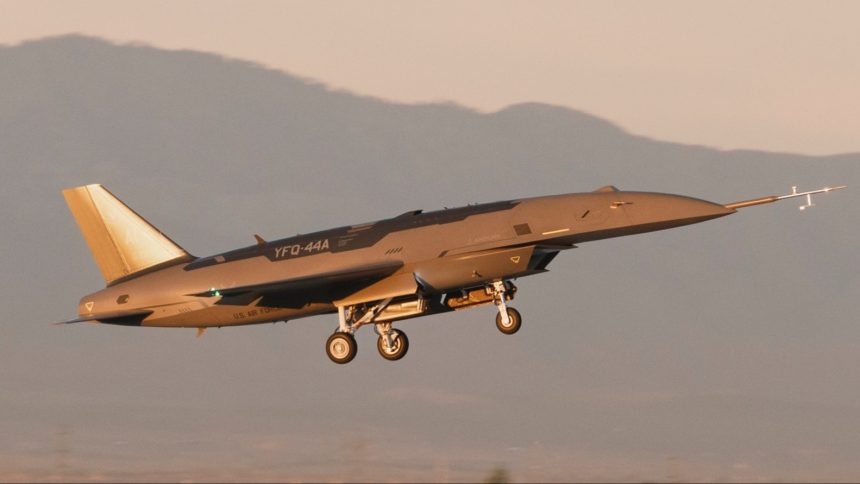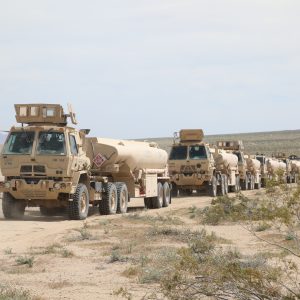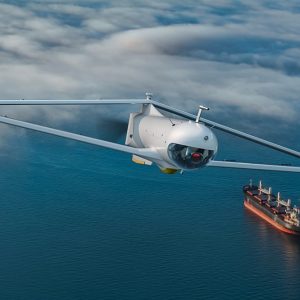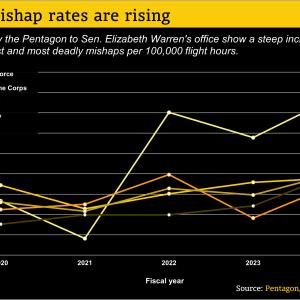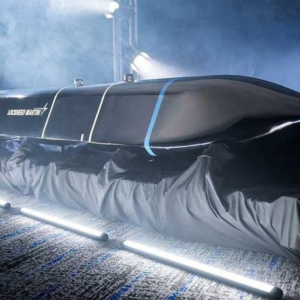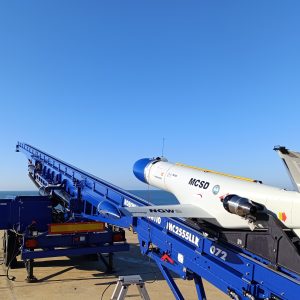
The YFQ‑44 Collaborative Combat Aircraft has completed its first flight, bringing both of the U.S. Air Force’s Increment 1 CCA prototypes—YFQ‑42A by GA‑ASI and YFQ‑44A by Anduril—into flight test. The event, conducted on Oct. 31, 2025, marks a pivotal step from paper concepts to flying, semi‑autonomous jet‑class wingmen designed to team with F‑35, F‑15EX and future NGAD assets.[1][2]
Key Facts: YFQ‑44A went from clean‑sheet to wheels‑up in 556 days; flew in a semi‑autonomous mode (not remote‑piloted); and will transition to production at Anduril’s new Arsenal‑1 facility in Columbus, Ohio, in 2026, pending program decisions.[2]
Why this first flight matters for CCA Increment 1
Speed is the headline. Anduril’s 556‑day sprint underscores how the YFQ‑44 Collaborative Combat Aircraft program is compressing aerospace timelines through digital engineering and commercial practices. Flight testing on both airframes now gives the Air Force real telemetry to anchor risk reduction, refine autonomy envelopes, and lock missionized configurations before a competitive production decision in FY26.[2][3]
Because YFQ‑44A flew semi‑autonomously, the test series can mature on‑board decision‑making—flight controls, throttle, and eventual sensor‑to‑shooter chains—without a human on a stick and throttle in the loop. This is central to CCA’s promise: pushing high‑risk tasks to attritable wingmen while preserving survivability of crewed fighters.[1][2]
Moreover, with YFQ‑42A already in the air since August 2025, the USAF can A/B compare architectures, maintenance concepts and sortie‑generation rates across two production‑representative unmanned fighters. That competition is the point; as Air Force Secretary Troy E. Meink noted, competitive flight data accelerates delivery and shapes requirements to stay ahead of pacing threats.[1][4]
What the airframe hints at: sensors, roles, and payloads
Imagery from unveiling and test events shows a production‑representative jet with a nose flight‑test probe and a fairing forward of the canopy line. Analysts have speculated this could house a forward‑facing camera or an infrared search and track (IRST) aperture; notably, Anduril introduced an Iris IRST family in 2024 designed for rapid integration on crewed and uncrewed platforms.[1][5][6]
The initial emphasis for Increment 1 is air‑to‑air teaming—escort, stand‑in sensing, and suppression of enemy air defenses in support of crewed packages. However, both CCA lines emphasize modular bays and open architectures, enabling rapid payload swaps as missions expand to strike, electronic warfare and decoy roles in Increment 2 and beyond.[3]
Industrial base implications: Arsenal‑1, digital threads and scale
Anduril says YFQ‑44A will be the first program introduced at its Arsenal‑1 production site in Columbus, Ohio. If the factory scales as advertised, it could provide a complementary production lane to legacy primes and help the Air Force reach its goal of deploying hundreds of CCAs in the near term. Open‑architecture baselines and a common chassis approach—mirrored by GA‑ASI’s broader Gambit family—are intended to keep unit costs down while enabling frequent tech refresh.[2][7]
For sustainment, modularity matters as much as manufacturing. Line‑replaceable mission modules and software‑defined behaviors aim to shorten depot cycles and allow spiral upgrades without grounding fleets. That approach is essential for distributed operations where resilience and rapid reconstitution trump exquisite, slow‑to‑produce platforms.
Strategic context: from a single fighter to a system‑of‑systems
The Air Force’s pivot is unmistakable: rather than relying on one ultra‑expensive crewed platform, it is fielding a system‑of‑systems in which the YFQ‑44 Collaborative Combat Aircraft and its counterpart act as force multipliers. CCAs extend sensor reach, complicate adversary targeting with distributed signatures, and absorb the riskiest legs of missions. Budget realities favor this shift as well: CCAs promise far greater capacity per dollar and can be attrited without losing pilots or a decade of procurement.
Operationally, the CCA enterprise must still prove robust human‑machine teaming, safe autonomy in contested EM environments, and reliable datalinks under jamming. Flight testing will probe these edges. As telemetry accumulates, expect tighter integration with tactics at Nellis and expanded experiments in mission autonomy, cooperative EW, and stand‑in sensing.[1][3]
Program timeline: decisions in FY26, missions broaden after
According to official USAF releases, a competitive Increment 1 production decision is planned for fiscal year 2026, while Increment 2 will begin the same year to widen mission applications and integrate emerging technologies. With both prototypes flying, the near‑term focus is reliability, maintainability, and mission data generation to inform that FY26 down‑select.[3][8]
For readers tracking the broader loyal‑wingman ecosystem, our coverage of emerging entrants such as Shield AI’s X‑BAT offers additional context on how industry is converging on stealthy, autonomous wingmen architectures.[Internal]
Technical watch‑list for the next test sorties
Three items deserve attention as the YFQ‑44 Collaborative Combat Aircraft expands its envelope: (1) Autonomy stability during edge‑of‑envelope maneuvers and cross‑winds; (2) Sensors‑to‑effects latency when federated with crewed wingmen; and (3) Mission module swaps to verify genuine plug‑and‑play with minimal ground time. Success on these points will validate the thesis behind CCAs: scalable, iterative combat power that keeps pace with threat cycles.
Editor’s note: All technical details and quotes in this article derive from official releases and on‑record reporting; speculation about nose‑mounted apertures is presented as a working hypothesis pending program confirmation.
Conclusion
The first flight of the YFQ‑44 Collaborative Combat Aircraft closes the gap between concept art and fieldable combat mass. With two prototypes now airborne, the CCA program enters a data‑rich phase where speed, modularity, and competition can turn into deployable squadrons. The next twelve months—before FY26—will decide how quickly this vision converts into numbers on ramps and capability at the edge.
Related analysis: Europe’s space‑industrial consolidation and its implications for defence autonomy.
Further Reading
- USAF official update on CCA flight testing and FY26 decision window.[3]
- Anduril’s announcement on YFQ‑44A flight test campaign and Arsenal‑1 production plan.[2]
- GA‑ASI note on YFQ‑42A entering flight test in August 2025.[4]
- Independent coverage of YFQ‑44A’s maiden flight and semi‑autonomous mode.[1]
- Background on Anduril’s Iris IRST family and potential CCA sensor fits.[5]
References
[1] Reuters – “US defense company Anduril flies its uncrewed jet drone for first time,” Oct. 31, 2025. Link
[2] Anduril – “YFQ‑44A begins flight testing for the Collaborative Combat Aircraft program,” 2025. Link
[3] U.S. Air Force (af.mil) – “Collaborative Combat Aircraft, YFQ‑42A takes to the air for flight testing,” Aug. 27, 2025 (includes FY26 production‑decision guidance). Link
[4] GA‑ASI – “YFQ‑42A CCA flight testing,” Aug. 27, 2025. Link
[5] The War Zone – “Low‑Cost IRST ‘Iris’ unveiled by Anduril,” Feb. 8, 2024. Link
[6] The Aviationist – “Anduril’s YFQ‑44A Collaborative Combat Aircraft Flies for the First Time,” Oct. 31, 2025 (source of featured image and additional context). Link

